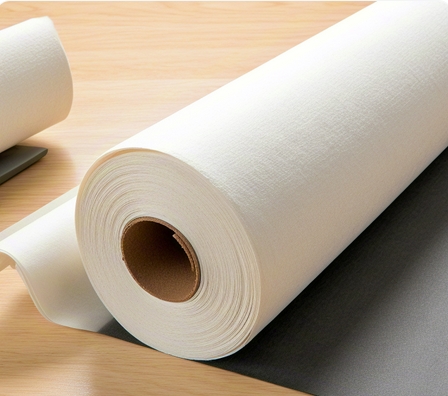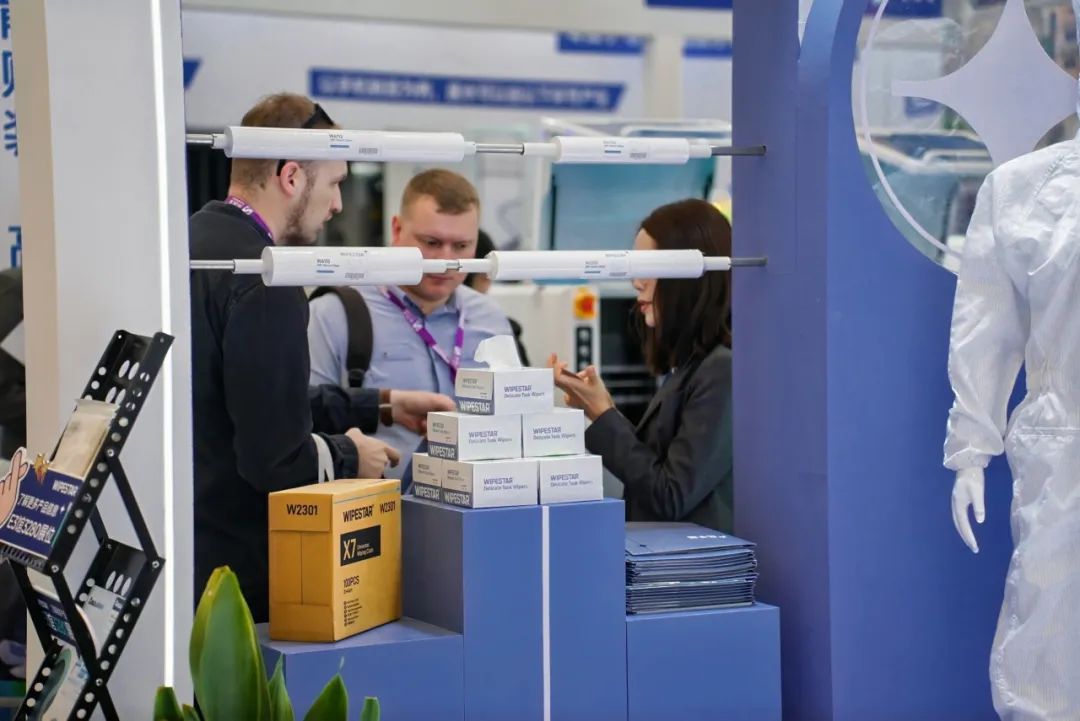Language

Core elements and technical specifications of industrial precision wipe systems
In the field of high-end manufacturing, automotive microfiber wipes have become the standard tool for precision surface treatment. According to data from the International Automobile Painting Association in 2023, 17 of the top 20 auto manufacturers in the world have included professional-grade wipe systems in process standards. Through a unique microstructure design, this type of special fiber material can reduce the coating defect rate to below 0.8‰, while reducing the cost of rework consumables by 35%. The following analyzes the technical points of industrial wipe systems from four dimensions.
The innovative standard of material engineering high-quality automotive wipes adopt gradient composite fiber technology, and its core is the 80/20 polyester-polyamide composite microfiber structure. This design stabilizes the monofilament fibrousness at 0.2-0.3 dtex (dtex, 10,000 meters of fiber weight 0.2 grams), which is equivalent to 1/100th of fineness of human hair. In the practice of the Mercedes-Benz Stuttgart factory, the fiber density of 2.2 million wipes per square inch were successfully controlled to be less than 3μm. The wedge-shaped cross-section of microfibers produces a capillary effect like the lotus leaf effect, realizing a dual cleaning mechanism between physical sweep and chemical bonding.
The industrial-grade wipe materials of the mechanical properties verification system must pass three-dimensional mechanical testing: meridian strength ≥550N (equivalent to lifting 55 kg of weight), weft strength ≥480N, and top breaking strength ≥850kPa. Volkswagen Group Technical Specification TL 226 specifically stipulates that wipe products for assembly workshops must pass 50 reciprocating friction tests, and the hair loss is ≤0.008mg/cm². To achieve this indicator, leading manufacturers use laser welding edge sealing technology to increase the fiber end curing accuracy to the ±5μm level to ensure that structural collapse does not occur during the wiping process.
Chemical tolerance testing specifications Professional automotive microfiber wipes must meet triple protection standards: ASTM F739 anti-permeability certification (240 minutes solvent contact), ISO 1817 volume expansion rate ≤2%, UL 94 V-0 flame retardant grade. A battery pack cleaning case at Tesla's Fremont factory shows that polyamide fibers modified with special-shaped cross-sections still maintain a strength retention rate of 98.6% after contacting the electrolyte. The honeycomb-like microstructure on the surface of the material can form a chemical buffer layer, effectively blocking the erosion of polar solvents.
The Circular Economy Practice Program's wiping system that complies with the ISO 14067 carbon footprint standard has now become an essential element for green factory certification. Empirical research at BMW Leipzig factory shows that after adopting a 200-recyclable wipe scheme, a single body production reduces 1.2kg of waste, which is equivalent to saving the carbon sink capacity of 6 square meters of forest. Through fiber surface plasma treatment technology, the adsorption efficiency of detergent is increased by 40%, reducing the solvent consumption of bicycle production from 850ml to 350ml. This closed-circuit system is reshaping the cleaning process paradigm of the automobile manufacturing industry.
In the field of automotive precision manufacturing, the performance parameters of professional wipe materials directly affect cleaning efficiency and equipment protection effect.
The bidirectional elastic structural material with a gram weight parameter of 300-350g/m² can be used to achieve optimized contact between the fiber and the surface during the wiping action. The production lines of manufacturers of International Automobile Working Group Certified (IATF 16949) should be equipped with fully automatic weaving systems, and their online monitoring equipment must meet the 0.02mm fiber diameter detection accuracy. Taking a head supplier as an example, its fiber modification laboratory is equipped with plasma surface treatment units (output power 15kW) and nanocoated deposition equipment (coating thickness 50-80nm). These core technologies can improve stain adsorption capacity by more than 30%.
The cleaning plan for key components of new energy vehicles requires special considerations. The insulation impedance value of the battery module (standard requirements ≥100MΩ) and the transmittance of the lidar mirror (special requirements >98%) are directly affected by the wipe material. The cleanliness test report certified by the German Automobile Industry Federation VDA 19.1 standard should include statistics on the number of particles with particle size >5μm. Industry data shows that the use of patented fiber braiding technology (such as 3D leveros structure) can reduce the residual particles to below 1,200 pieces/m². The wipe cycle experiment in the four-step method of material verification requires simulating 500 reciprocating movements under pressure conditions of 200N/cm², which is highly consistent with the actual working conditions of the vehicle-mounted camera module assembly line.
In the selection decision of automotivemicrofiber wipes, the procurement department needs to establish a multi-dimensional evaluation system. Taking polyester-nylon composite fiber (monofilament fiber 0.2-0.3 denominator) as an example, its optimal weaving density should be controlled in the range of 100±20 pieces/cm². This parameter directly affects the stain bearing capacity per unit area. The market analysis report pointed out that among products with prices below 30% of the industry's average price, about 45% have "pseudo-cleaning" phenomena caused by insufficient fiber density - the surface seems clean but actually retains 3-5μm grade abrasive particles. The recommended calculation formula for "cost of wiping area" must include the material loss coefficient. For example, in the pretreatment process of wiping sheet metal, the marginal cost of high-quality wipes can be 0.17 yuan/cm² lower than that of inferior products.
The verification process of professional laboratories should include three-dimensional tests of key performance: the wear resistance test under the ASTM D4966 standard requires the sample to maintain more than 85% fiber strength after 5000 frictions; the ISO 9073-6 liquid absorption performance test must complete the absorption of 10ml of simulated oil within 30 seconds; the cleanliness certification requires the detection of metal ions such as sodium and potassium through ion chromatography (standard value<1μg/cm²). According to actual data from a German car company, the scrubbing materials that have been strictly verified can reduce the rework rate of the total assembly workshop by 2.3 percentage points, which is equivalent to saving 1.27 million yuan in quality costs per production line annually.
Laboratory tests of a leading automobile manufacturer showed that professional-grade automotive microfiber wipes can maintain an initial oil absorption performance of 91.8% after simulating 200 continuous wipe operations, while the attenuation of oil-fouling adsorption capacity of cheap alternatives is as high as 63.2%. It is worth noting that a German brand found in the durability test that the fiber shedding rate of wipes using double-needle edge locking process was 42% lower than that of traditional products. It is recommended that the purchaser set a 10-15-day field trial cycle to verify the quality of edge sealing.
In the commercial procurement decision model, it is recommended to establish a structured comparative evaluation framework: the first dimension focuses on product technical parameters, requires that the weight deviation be strictly controlled within ±4.5%, and the pH value is stable in the neutral range of 6.8-7.2 to avoid fluctuations in the pH value to damage the surface of the car paint. The second dimension focuses on supply chain review. In addition to verifying the IATF 16949 automotive industry quality management certification, it is necessary to focus on evaluating the manufacturer's flexible production capacity. For example, a Japanese supplier achieves a minimum order quantity of 3,000 pieces through a modular production line. The third dimension implements full-cycle cost accounting. Practical data from a certain American car company shows that after compressing the warehousing loss rate from the industry average of 12% to 7%, the annual logistics cost will be reduced by US$280,000.
From a material science perspective, the polyester-polyamide composite fiber structure of high-quality wipes forms a capillary network, and this microscopic design is similar to the porous adsorption mechanism of a sponge. Comparative experiments show that when the fiber fineness reaches 0.12 denier, its oil storage capacity per unit area is 37% higher than that of conventional products. In terms of cost control, it is recommended to use the ABC operating cost method for detailed calculations. A new energy vehicle company successfully reduced the rework rate from 2.1 times per 1,000 units to 0.7 times by optimizing the procurement plan, and saved more than 450,000 yuan in annual quality cost.
Tags:
RELATED RESOURCES

From clean room to operating room: 7 application forbidden areas where dust-free cloth and non-woven
In the fields of industry and people's livelihood, although dust-free cloth and non-woven fabric are simil......
More

Application of reel dust-free cloth in display panel manufacturing: 0.5mm precision cleaning solutio
In the fields of advanced manufacturing and microelectronics, submicron pollution control is directly related ......
More

How to meet the Class 1000 standard for dust-free cloth? Material engineering and spray pressure con
1.Performance benchmark of clean room core consumables The dust-free cloth standard refers to the technical sp......
More

The two exhibitions concluded | WIPE STAR reshapes the new cleanliness standard with the power of sm
March 26-28, 2025The global semiconductor and electronics manufacturing industry focuses on ShanghaiTwo major ......
More
Related Products
Room 101, Building 1, Angeer Factory, No.4, Hetian Road, Shatian Community, Kengzi Street, Pingshan District, Shenzhen, Guangdong, P.R. China 518122
info@wipestar.com
+86-755-89616775
+86-755-89616773
Related Products
RELATED RESOURCES

From clean room to operating room: 7 application forbidden areas where dust-free cloth and non-woven
In the fields of industry and people's livelihood, although dust-free cloth and non-woven fabric are simil.........
More

Application of reel dust-free cloth in display panel manufacturing: 0.5mm precision cleaning solutio
In the fields of advanced manufacturing and microelectronics, submicron pollution control is directly related .........
More
WIPESTAR
微信官方公众号